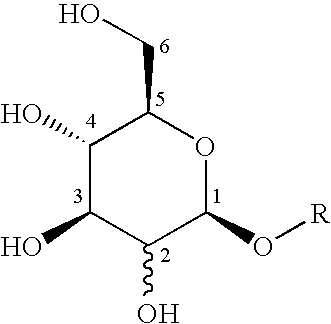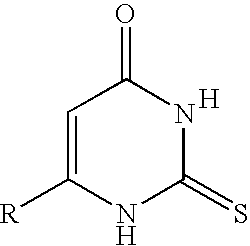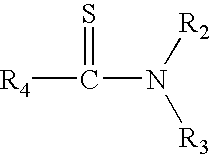Method for the identification of antagonists of a phenylthiocarbamide/bitter taste receptor
- Summary
- Abstract
- Description
- Claims
- Application Information
AI Technical Summary
Benefits of technology
Problems solved by technology
Method used
Image
Examples
example 1
Cloning of the hTAS2R Genes
[0155]Human genomic DNA was isolated from HEK293 cells using the E.Z.N.A. Blood DNA Kit II (Peqlab) and the various hTAS2Rs were amplified by PCR using gene-specific primers that span the complete coding region of the individual hTAS2R genes. Reaction parameters were: 4 cycles; 1 min, 94° C.; 1 min, 64° C.; 1.5 min 68° C. using Advantage 2 polymerase (Clontech). 5% of the reaction served then as template for further amplification with Pfu DNA polymerase (Promega): 30 cycles; 1 min, 94 C; 1 min, 64° C.; 3 min. 72° C. The hTAS2R amplicons were then sub-cloned into a cassette based on pcDNA5-FRT (Invitrogen). The cloning cassette contains the first 45 amino acids of the rat somatostatin type 3 receptor (as is further described by Meyerhof et al., Proc. Nat. Acad. Sci. USA, 89, 10267-10271 (1992)) as a cell surface-targeting signal at the N-terminus. The C-terminus contained the herpes simplex virus (HSV) glycoprotein D epitope which does not interfere with si...
example 2
[0157]Batches of HEK293 cells were separately transiently transfected with expression vectors (pCDN5 / FRT; Invitrogen) containing each of the 24 above described coding sequences using lipofectamine 2000 (Invitrogen) and aliquots of the resulting cell populations were separately seeded on polylysine-coated coverslips. At 24 h post transfection they were washed with phosphate buffered saline (PBS), cooled on ice and added 20 microgram / ml biotin-labeled concanavalin A (Sigma) for 1 h, which binds to cell surface glycoproteins. Thereafter, the cells were fixed for 5 min in methanol / acetone (1:1) and then permeabilized for 4 min with 0.25% Triton X-100. In order to reduce nonspecific binding the coverslips were incubated in 2% goat serum. Thereafter, anti-HSV glycoprotein D antiserum (Novagen, 1:10,000) was added to detect the chimeric receptors that, as described above, would have a HSV glycoprotein epitope fused to their C-termini, and Texas Red-Avidin D (Vector, 1:20...
example 3
Heterologous Expression of hTAS2R Receptors
[0158]A fluorescence imaging plate reader (FLIPR, Molecular Devices) was used to functionally screen cell populations transiently transfected with expression vectors encoding the above-described 24 bitter receptors and to establish concentration-response curves for hTAS2R16 and hTASR10. The single-cell calcium imaging technique was also employed to demonstrate receptor selectivity and crossdesensitization. For the FLIPR experiments the HEK293 / 15 cells were grown to 50% confluence. The cells were then seeded at a density of 3×103 cells per well into 96-well black-wall, clear-bottom microtiter plates (Greiner). After 48 h the cells in each well were transfected using Lipofectamine 2000 and 24-30 h later were loaded with FIuo4AM (Molecular Probes). Thereafter they were stimulated with bitter compounds (SigmaAldrich, further purified by reversed-phase HPLC to >99% purity). Calcium signals were recorded simultaneously from each well at 1 Hz at 5...
PUM
| Property | Measurement | Unit |
|---|---|---|
| Fraction | aaaaa | aaaaa |
| Molar density | aaaaa | aaaaa |
| Molar density | aaaaa | aaaaa |
Abstract
Description
Claims
Application Information
 Login to View More
Login to View More - R&D
- Intellectual Property
- Life Sciences
- Materials
- Tech Scout
- Unparalleled Data Quality
- Higher Quality Content
- 60% Fewer Hallucinations
Browse by: Latest US Patents, China's latest patents, Technical Efficacy Thesaurus, Application Domain, Technology Topic, Popular Technical Reports.
© 2025 PatSnap. All rights reserved.Legal|Privacy policy|Modern Slavery Act Transparency Statement|Sitemap|About US| Contact US: help@patsnap.com



